Space
Sign up for our newsletter
We summarize the week's scientific breakthroughs every Thursday.
-
 Space
SpaceA lunar magnetic field may have lasted for only a short time
New analyses of Apollo-era lunar rocks suggest that any magnetosphere that the moon ever had endured for no more than 500 million years.
-
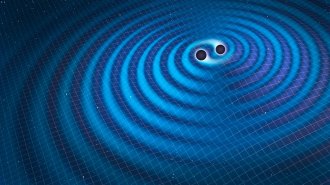 Physics
PhysicsA bounty of potential gravitational wave events hints at exciting possibilities
Of about 1,200 possible events, most are probably false alarms, but some could be ripples in spacetime that are especially hard to spot.
-
 Physics
PhysicsBlack holes born with magnetic fields quickly shed them
New computer simulations show one way that black holes might discard their magnetic fields.
-
 Astronomy
AstronomyA super-short gamma-ray burst defies astronomers’ expectations
A faraway eruption of gamma rays that lasted for only a second had a surprising origin: the implosion of a massive star.
-
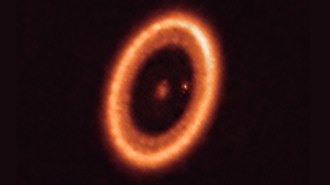 Astronomy
AstronomyThe tiny dot in this image may be the first look at exomoons in the making
New ALMA observations offer some of the strongest evidence yet that planets around other stars have moons.
-
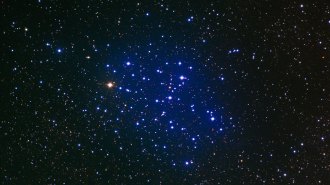 Space
SpaceHow do scientists calculate the age of a star?
There are a few different methods to determine the age of a star, but none are perfect.
By Lisa Grossman and Helen Thompson -
 Planetary Science
Planetary ScienceMarsquakes reveal the Red Planet boasts a liquid core half its diameter
Analyses of seismic waves picked up by NASA’s InSight lander shed new light on the planet’s core and give clues to the thickness of the crust.
By Sid Perkins -
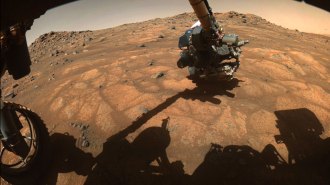 Planetary Science
Planetary ScienceNASA’s Perseverance Mars rover has begun its first science campaign
Now about 1 kilometer south of its landing spot, the rover has spotted several promising spots in its search for hints of ancient life.
-
 Planetary Science
Planetary ScienceA century of astronomy revealed Earth’s place in the universe
The past century of astronomy has been a series of revolutions, each one kicking Earth a bit farther to the margins.
-
 Astronomy
AstronomyThe latest picture of a black hole captures Centaurus A’s massive jets
Data from the Event Horizon Telescope reveal new details of jets spewing from the supermassive black hole at the center of the galaxy Centaurus A.
-
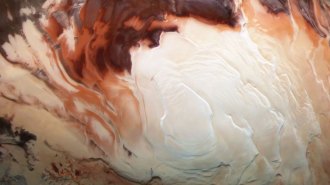 Planetary Science
Planetary ScienceLakes of liquid water at Mars’ southern ice cap may just be mirages
In 2018, scientists found evidence for water lakes sitting beneath the southern Martian ice cap. New evidence suggests the lakes might not exist.
By Adam Mann -
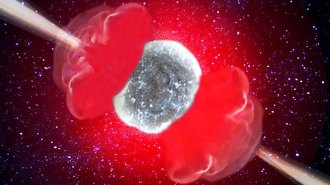 Space
SpaceSouped-up supernovas may produce much of the universe’s heavy elements
An old star that formed from an explosive event called a magnetorotational hypernova is revealing where elements like uranium and silver might be forged.